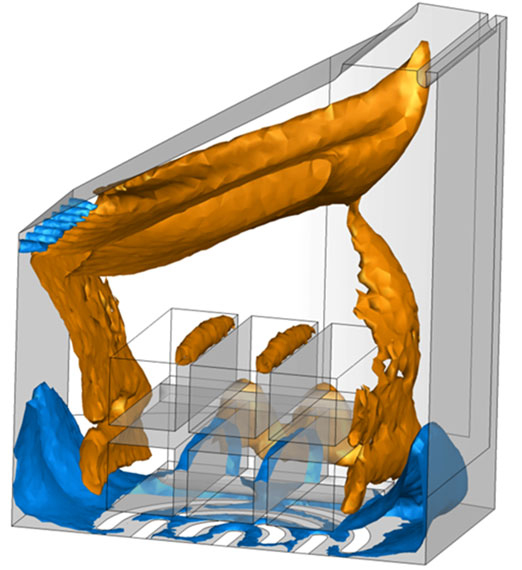What most people aren’t very familiar with is what actually happens to the logs after you have put them in the stove, and how this ultimately affects energy efficiency, climate and the environment, as well as your home heating comfort and domestic finances.
But this is where we can make a contribution! This blog is here to provide you with some answers…

Combustion…
The burning of firewood logs represents a major challenge in the field of combustion engineering. You start with very large particles (the logs themselves) that contain water, more than 80 per cent gases, charcoal and ash. When you get a fire going in a wood-burning stove, you initiate a conversion process in which the original logs are transformed into charcoal, and finally end up as ash. Because of the composition and size of the logs, there is nothing that remains constant during this combustion process, and this includes the production of heat.
Drying is energy-demanding
Drying is an important component process during the burning of firewood logs. It requires a lot of energy, especially at the start of combustion. In order for us to better understand the entire combustion process and exploit this knowledge effectively as a means of improving wood-burning stoves, it is desirable to model the entire combustion process. We do this using a so-called Computational Fluid Dynamics (CFD) tool.

Of course, the drying component model has to be physical and able to provide an adequate representation of what happens in practice. However, it is often the case that there are several ways of approaching the construction of a physical model. Since CFD simulations, especially for a process as complicated as firewood log combustion, require enormous computation power, it is important that the model is not only adequately physical, but also not too demanding on computing capacity.
WoodCFD
As part of the knowledge-building project called WoodCFD (where the acronym tells you a lot), an extensive amount of work is being carried out to model the entire combustion process for a firewood log. This model can then be used in the CFD tool. A variety of drying models have been implemented and analysed as part of this project.
Some published results
The result has been published in the periodical Energy & Fuels. The main author is Ph.D. student Inge Haberle, who has been working on the WoodCFD project. Here is the article:
- Drying of Thermally Thick Wood Particles: A Study of the Numerical Efficiency, Accuracy, and Stability of Common Drying Models.
One of the conclusions from this paper is that the selection of drying model has a significant influence on required computing power, but no significant impact on the accuracy of the result.
Haberle’s initial work as part of her Ph.D. studies involved a comprehensive review that was published in the leading review periodical Progress in Energy and Combustion Science:
One conclusion from this paper is that even though a lot of useful work has been completed in the past, there is still great potential for improvement, especially when it comes to arriving at sufficiently robust models for firewood log combustion.
Haberle, together with her tutor Nils E. Haugen (from SINTEF Energy Research/NTNU EPT) and myself (acting as co-tutor, also from SINTEF Energy Research) are continuing to work with what will ultimately become a fully integrated model for firewood log decomposition during the combustion process.
Ultimately, the firewood log model will be used in CFD simulations of wood-burning stoves. Here, the final objective will be to apply this research-based knowledge to the development, in close cooperation with Norwegian stove manufacturers, of more environmentally-friendly and energy-efficient stoves.
- Do you want to find out more about the WoodCFD project and wood combustion? Contact Øyvind Skreiberg.








Comments
No comments yet. Be the first to comment!